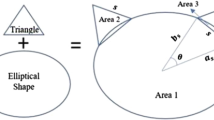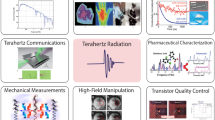Abstract
In this paper a micro-strip Bluetooth low energy (BLE) patch antenna with a copper patch of length 20 mm, width of 14 mm and a 433 MHz antenna with a copper patch of length 85 mm and width of 140.75 mm is used for IOT applications with permitted specific absorption rate (SAR) values. The BLE patch antenna works in the personal area network and the 433 MHz antenna works in the Wide area network. The BLE patch antenna is very useful because of its low data rate, extended sleep periods as this leads to very low consumption of power. Both the antennas used in this paper are simulated keeping in mind the effects of radiation on the human body. So, even though mobile multimedia has many advantages but due to data transmission, heat generated (or heat radiated) from these sensory devices are high and results in heat dissipation. The SAR value obtained for BLE antenna is 0.90337 W/kg and gain is 3.39 dB. The SAR value of 433 MHz antenna is 0.09021 W/kg and gain is 7.66 dB. So, the SAR values were analysed and optimized for the designing of the above stated antennas.



















Similar content being viewed by others
References
Buckley J, Gaetano D, McCarthy KG, Loizou L, O’Flynn B, O’Mathuna C (2014) Compact 433 MHz antenna for wireless smart system applications. Electron Lett 50:572–574
Chandran D, Adarkar S, Joshi A, Kajbaje P (2017) Digital medicine: an android based application for health care system. Int Res J Eng Technol 4(4):2319–2322
Choudhury S, Kalyani V, Sai Teja R, Sreenivasan P, Kotamraju SK, Sri Kavya KC (2017) A comparative analysis of rectangular cut edge patch antenna on various substrate. Int J Eng Technol 7(1.1):518–524
Dhruv S, Diksha P, Chaurasia MR (2016) Microstrip patch antenna for Wi-Fi and bluetooth application in the ISM band. Int J Recent Eng Sci 20:1–3
Hussain N, Jeong M-J, Park J, Bong H, Azimov U, Kim N (2018) Design of a low specific absorption rate microstrip patch antenna for WLAN applications. BioEM
Jayabharathy K, Ilakkia S (2020) SAR analysis of microstrip patch antenna in human head. In: 2020 7th international conference on smart structures and systems (ICSSS), pp 1–4
Kamalaveni A, Ganesh Madhan M (2016) A compact TRM antenna with high impedance surface for SAR reduction at 1800 MHz. AEU Int J Electron Commun 70(9):1192–1198
Poruran S (2018) Performance enhancement of micro strip patch antenna for wireless applications. Int J Pure Appl Math 118:465–471
Rani AS, Karthika E, Mala K, Ayyappan K (2018) Rectangular microstrip patch antenna design for 2.1 GHz and 2.3 GHz—4G application. In: 2018 international conference on current trends towards converging technologies (ICCTCT), pp 1–6
Valsalan P, Baomar TAB, Baabood AHO (2020) IoT based health monitoring system. J Crit Rev 7(4):739–743
Werfelli H, Tayari K, Chaoui M, Lahiani M, Hamadi G (2016) Design of rectangular microstrip patch antenna, pp 798–803
Wessapan T, Srisawatdhisukul S, Rattanadecho P (2011) Numerical analysis of specific absorption rate and heat transfer in the human body exposed to leakage electromagnetic field at 915 MHz and 2450 MHz. ASME J Heat Transf 133(5):051101
Funding
The authors declare that no funding was received during the completion of study.
Author information
Authors and Affiliations
Corresponding author
Ethics declarations
Conflict of interest
The authors declare that they have no conflict of interest.
Additional information
Publisher's Note
Springer Nature remains neutral with regard to jurisdictional claims in published maps and institutional affiliations.
Rights and permissions
About this article
Cite this article
Gupta, S., Kundu, C., Rajawat, A. et al. Design and analysis of permitted specific absorption rate (SAR) antennas for IOT applications. Int J Syst Assur Eng Manag 13, 2594–2603 (2022). https://doi.org/10.1007/s13198-022-01668-4
Received:
Revised:
Accepted:
Published:
Issue Date:
DOI: https://doi.org/10.1007/s13198-022-01668-4




